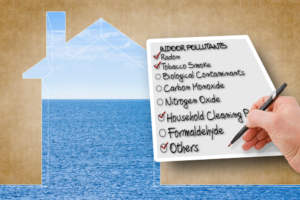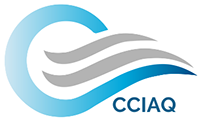Module-2
Volatile Organic Compounds (VOC)
Module 2 – Volatile Organic Compounds (VOC)
The second module of the CCIAQ’s Guide for Indoor Air Quality gives building operators and managers information about volatile organic compounds. VOCs are chemicals that contain carbon, hydrogen and oxygen, and are gases at room temperature.
 We have introduced a “source-pathway-receptor” model for assessment of potential volatile organic compounds sources, of ventilation and of cleaning. Then, we have given a process for deciding whether sampling would help in checking VOC controls.
We have introduced a “source-pathway-receptor” model for assessment of potential volatile organic compounds sources, of ventilation and of cleaning. Then, we have given a process for deciding whether sampling would help in checking VOC controls.
Sampling is described for use various activities. They include building commissioning, best-management practices (including assessment and control during renovation or construction activities), regulatory compliance, and investigating occupant complaints.
Guidance is given on when and where to sample for VOCs, and how the types of VOCs and the building environment can affect strategies. In addition, a flowchart shows how to work from goals to choosing a strategy. Example goals include complying with regulations, and fixing problems. We’ve described sampling methods for real-time monitoring, as well as active and passive sampling. Furthermore, we offered suggestions for choosing a consultant, and on laboratory accreditation.
There are many practical lists (with references and links), including: best-management practices; occupational health and safety regulations; commonly-encountered VOCs and sources; sample guidelines for managing VOCs; complaint patterns and sampling; effects of building age on sampling; effects of site factors on VOC sampling and analysis; and accreditations commonly used by Canadian labs.
You can download Module 2 for free here
